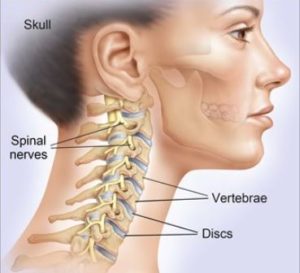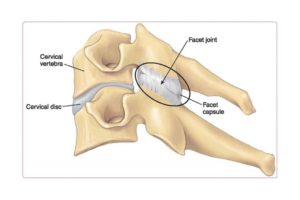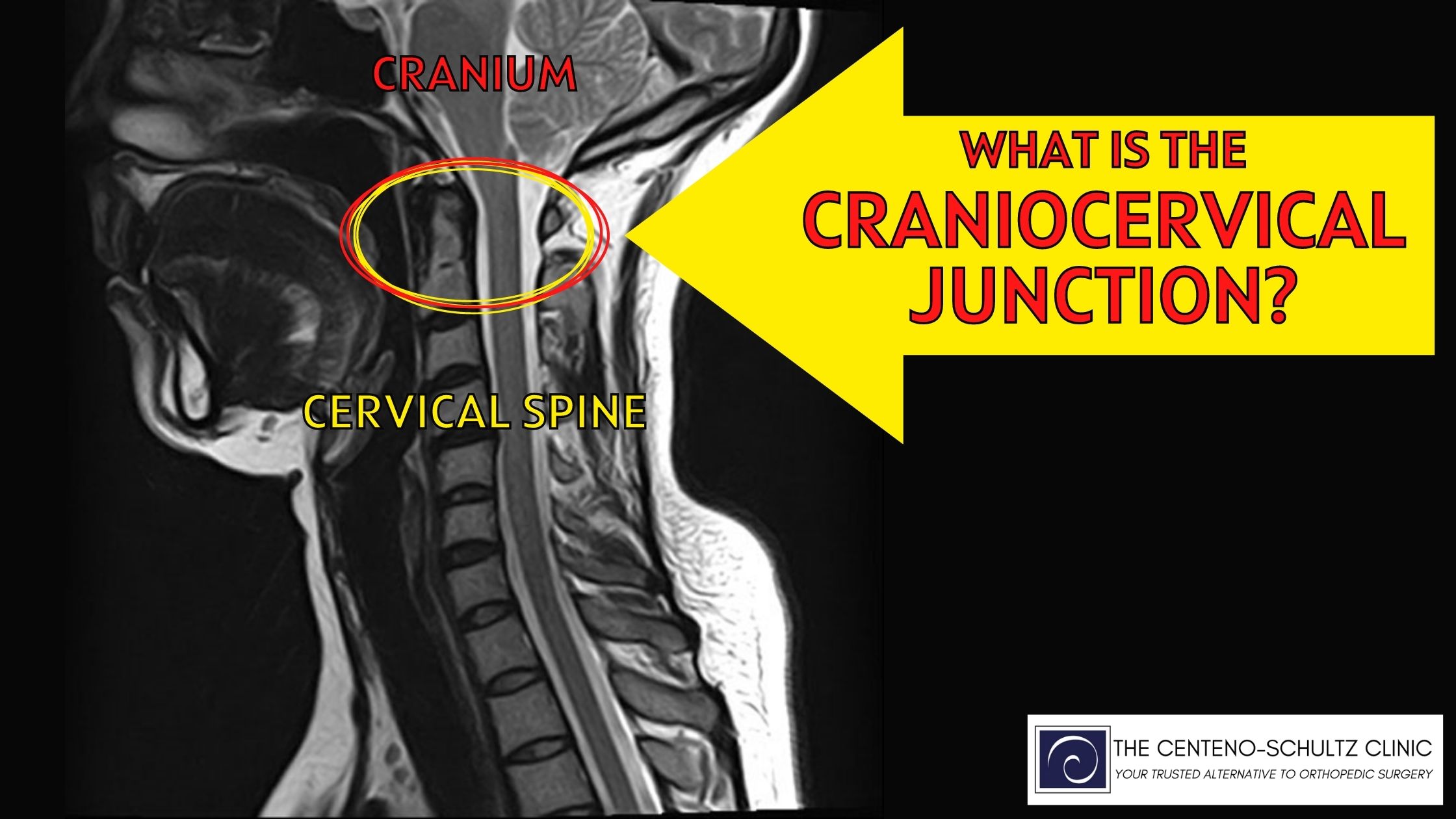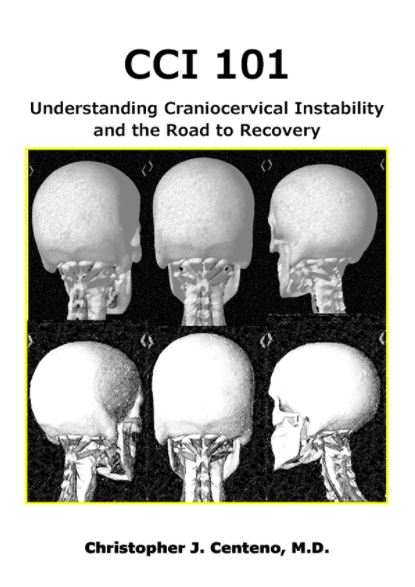The headaches started abruptly and without warning. They are not like the headaches due to excessive alcohol or disagreements with the in-laws. The headaches have not responded to medications or rest. You and your family are concerned. Your doctor thinks you may have a problem in the upper neck. He mentioned something about the Craniocervical Junction. What is the Cranium? What is the Cervical Spine? What is the Craniocervical Junction? What are the key components within the Craniocervical Junction? Why is the Craniocervical Junction important? Let’s dig in.
What Is the Cranium?

The Cranium is your skull. Otherwise, known as your noggin. Collectively the Cranium includes the Frontal, Parietal, Temporal, Sphenoid, and Ethmoid bones. It provides important protection for your brain.
What Is the Cervical Spine?

Your neck is also called the Cervical Spine. It starts at the base of the skull and is composed of multiple structures which include:
Bones
The bones in the neck are also known as vertebral bodies. There are 7 vertebral bodies in the neck that stacked upon one another. They are numbered 1 through 7. The letter C precedes each number indicating that we are referencing the Cervical Spine. C=cervical. The top bone is the C1 and is also referred to as the Atlas. The lowest bone in the neck is the C7.
Discs
The Disc is a fibrocartilage cushion that is sandwiched between each of the vertebral bodies. It is an important shock absorber. Its name is based on the bones it is sandwiched between. For example, the Disc between the C6 and C7 vertebral body is referred to as the C6/7 disc. It is susceptible to injury. Common examples of Disc injuries include protrusions, herniations, and extrusions.
Facet Joints

The Facet Joints are small, paired joints on the backside of the neck. There are right and left Facet Joints at each spinal level. The Facet Joints provide important stability to the neck and limit movement. Like the knee and ankle joints, the Facet Joints are lined with cartilage which allows for smooth, pain-free motion. Unfortunately, the Facet is susceptible to injury with the compromise of the joint cartilage and joint health. The result can be a limited range of motion in the neck and pain.
Ligaments
Ligaments are thick pieces of connective tissue that connect bone to bone. Essentially human duck tape. They provide stability for the neck and head. There are a large number of ligaments in the Cervical Spine. Two important ligaments are the Alar and Transverse ligaments. These ligaments essentially connect your head to your neck. Unfortunately, these ligaments are susceptible to injury.
Tendons
Tendons are connective tissue that connects muscle to bone. Muscles and tendons in the Cervical Spine provide important stability and enable movement. Like ligaments, tendons are injured due to trauma, repetitive use, and degeneration. Injured tendons can jeopardize neck stability, health, and movement. The consequences can be nech pain, headaches, and a limited range of motion.
What Is the Craniocervical Junction?
The Craniocervical Junction is the area between the Skull and the Cervical spine. It consists of the bone that forms the base of the Skull, the first two bones in the spine, and the neural structures that pass from the brain down into the Cervical Spine.
What Is In the Craniocervical Junction?
The base of the Skull also known as the Occiput has a large opening at its base called the Foramen Magnum. Foramen meanings opening. Magnum means large. So the Foramen Magnum is a large boney opening at the base of the Skull that allows important structures to pass through. Important structures that pass through the Foramen Magnum include:
Spinal Cord
The Spinal Cord consists of neural tissue that starts at the base of the brain and extends down into the low back. It is a cylindrical bundle of nerve fibers that control our voluntary and involuntary bodily functions. It carries signals between the brain and the rest of the body. As the Spinal Cord descends from the skull and through the neck and rest of the body it is protected on all sides by spinal bones. These bones provide boney armor to protect against injury. The Spinal Cord has an additional layer of protection afforded by the spinal fluid. The spinal fluid is also known as Cerebral Spinal fluid. It surrounds the Spinal Cord and extends the entire length of the spine. The image to the right is a side view of the Spinal Cord as it exits the brain. The Spinal Cord is black in color. The white that surrounds the Spinal Cord is the spinal fluid.
Cranial Nerves
As the Spinal cord descends through the Foramen Magnum and spine, important nerves branch off traveling to different parts of the body. There are a large number of nerves. These include the 12 Cranial nerves some of which control muscles whereas others are connected to internal organs such as the heart and lungs.
Arteries and Veins
Arteries and veins provide blood flow to and from important structures in the head, neck, and body. Without blood flow, the body can not function.
Ligaments
Ligaments are the human duct tape that keeps everything in alignment and stable.
Why Is the Craniocervical Junction Important?
The Spinal Cord exits the Skull through a large boney hole called the Foramen Magnum. The Spinal Cord then descends through the neck protected by the spinal bones and spinal fluid. The Spinal Cord is extremely fragile and does not tolerate trauma, compression, and excessive movement. The Spinal Cord transmits important information from the brain to the body. If the transmission of important is impaired or compromised patients can suffer a large number of symptoms and conditions which will be discussed in a future post.
In Conclusion
The Cranium is your Skull which is composed of a number of different bones.
Your neck is also referred to as the Cervical Spine. It s composed of bones, discs, Facets Joints, ligaments, and tendons.
The Craniocervical Junction is the area between the Skull and the Cervical Spine.
The Craniocervical Junction consists of the bone that forms the base of the Skull, the first two bones in the spine, and the neural structures that pass from the brain down into the Cervical Spine.
Important structures within the Craniocervical Junction include:
Spinal Cord
Cranial Nerves
Arteries and Veins
Ligaments
The Craniocervical Junction is important as it is where the Spinal Cord, nerves, arteries, and veins descend from the head into the upper Cervical Spine. Trauma, compression, or instability in this area can lead to symptoms and dysfunction compromising health and well-being. If you’re suffering from symptoms associated with Craniocervical Instability or Cervical trauma, please make sure to consider Regenexx procedures at Centeno-Schultz Clinic.





